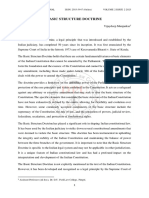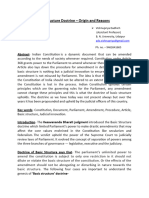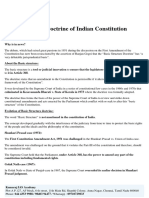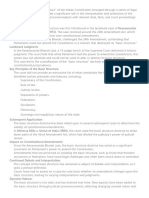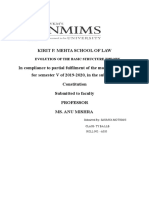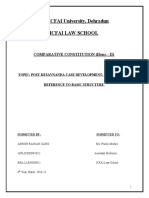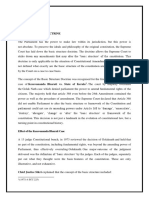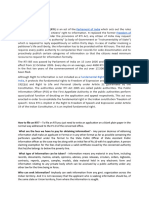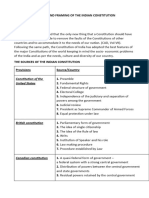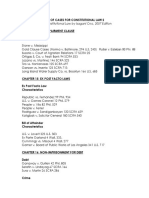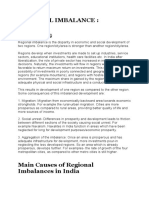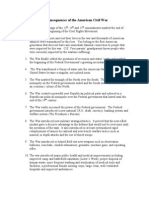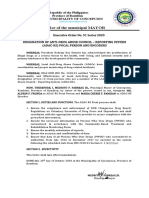0% found this document useful (0 votes)
10 views3 pagesBasic Structure
The doctrine of basic structure is a crucial concept in Indian constitutional law that limits Parliament's amending power to protect the Constitution's core identity. Established in the landmark case of Kesavananda Bharati v. State of Kerala, it asserts that certain fundamental features, such as the supremacy of the Constitution and judicial review, cannot be altered. This doctrine remains uncodified to allow for adaptability and responsiveness to evolving societal needs, ensuring the Constitution remains a living document.
Uploaded by
washimglpCopyright
© © All Rights Reserved
We take content rights seriously. If you suspect this is your content, claim it here.
Available Formats
Download as PDF, TXT or read online on Scribd
0% found this document useful (0 votes)
10 views3 pagesBasic Structure
The doctrine of basic structure is a crucial concept in Indian constitutional law that limits Parliament's amending power to protect the Constitution's core identity. Established in the landmark case of Kesavananda Bharati v. State of Kerala, it asserts that certain fundamental features, such as the supremacy of the Constitution and judicial review, cannot be altered. This doctrine remains uncodified to allow for adaptability and responsiveness to evolving societal needs, ensuring the Constitution remains a living document.
Uploaded by
washimglpCopyright
© © All Rights Reserved
We take content rights seriously. If you suspect this is your content, claim it here.
Available Formats
Download as PDF, TXT or read online on Scribd
/ 3










